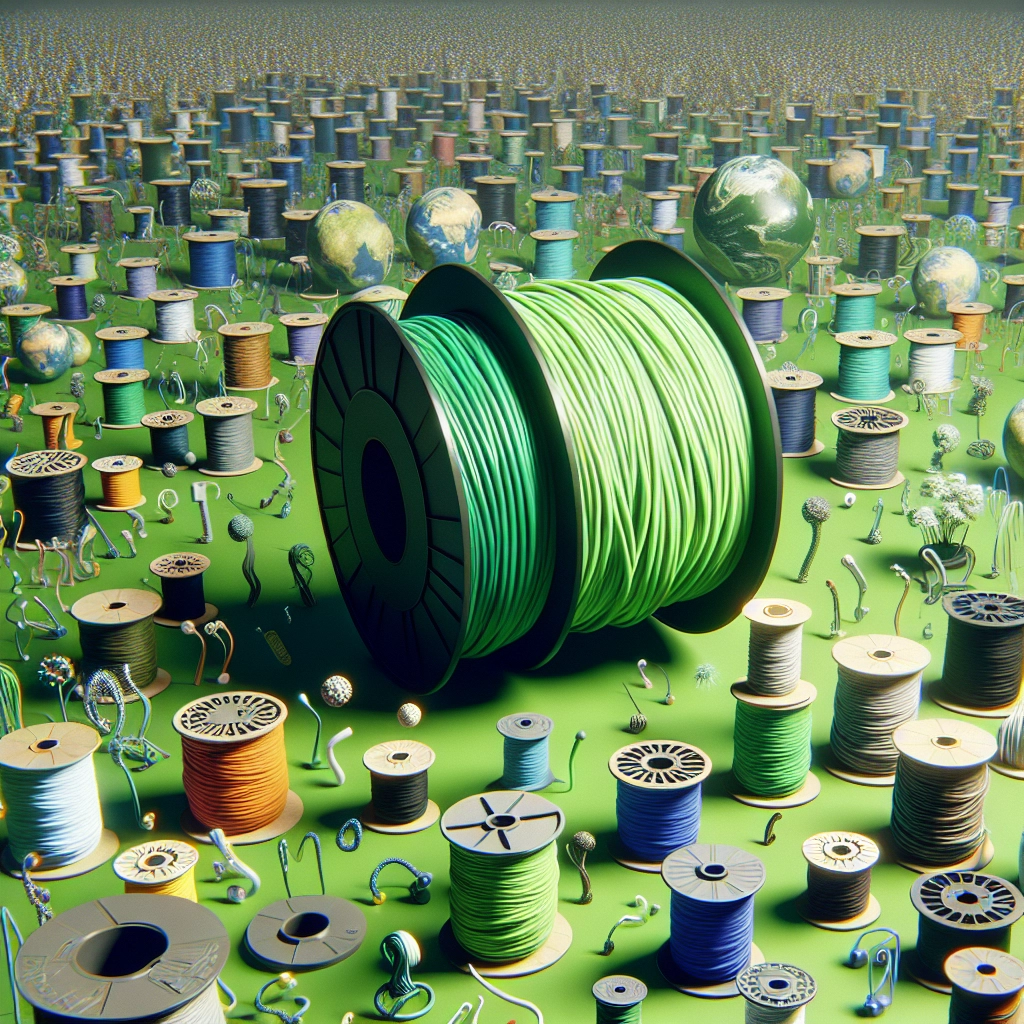Exploring the World of Eco-Friendly 3D Filaments
In recent years, the 3D printing revolution has taken the world by storm, allowing individuals and businesses to create everything from intricate jewelry to complex mechanical parts right at their fingertips. However, as this technology has grown, so has the awareness of its environmental impact. Enter eco-friendly 3D filaments—an exciting solution that not only keeps the creativity flowing but also helps reduce our carbon footprint. Let’s dive into the world of sustainable 3D printing!
What Makes a Filament Eco-Friendly?
When we talk about eco-friendly filaments, we generally refer to materials that have a lower environmental impact throughout their lifecycle—from production to disposal. These materials are often biodegradable or recyclable, made from renewable resources, and produced with less energy compared to traditional filaments.
One of the most popular eco-friendly options currently available is PLA (Polylactic Acid), derived from renewable sources such as cornstarch or sugarcane. Unlike conventional plastics that take hundreds of years to decompose, PLA can break down in a matter of months under the right conditions. It’s a win-win: you get all the benefits of versatile 3D printing without the guilt associated with plastic waste.
Popular Eco-Friendly Filaments to Consider
As the industry responds to growing environmental concerns, the selection of eco-friendly filaments is expanding. Here are a few standout options:
-
PLA: As mentioned earlier, PLA is the go-to choice for many eco-conscious makers. It prints easily, is non-toxic, and can even be composted under industrial conditions. Plus, it comes in a kaleidoscope of colors!
-
PVA (Polyvinyl Alcohol): Often used as a support material in dual extrusion processes, PVA is biodegradable and water-soluble. It’s especially great for printing intricate designs that require temporary support.
-
PETG (Polyethylene Terephthalate Glycol-Modified): This filament is not only strong and versatile but is also recyclable. PETG can be obtained from recycled plastic bottles, making it a great option for environmentally friendly prints.
-
Nylon with a twist: Some brands have developed variations of nylon blended with biodegradable fillers, allowing you to enjoy nylon’s excellent tensile strength while maintaining eco-friendly qualities.
-
Wood-filled and Bio-composite Filaments: These unique materials combine traditional 3D printing filaments with natural substances like wood fibers or hemp. They can offer a beautiful aesthetic reminiscent of natural wood at a fraction of the ecological cost.
The Benefits of Using Eco-Friendly Filaments
Switching to eco-friendly filaments in your 3D printing projects is not solely about being altruistic; it opens up a range of advantages for both novice hobbyists and seasoned professionals.
-
Environmental Impact: Using biodegradable materials reduces pollution and lowers reliance on fossil fuels, addressing some of the significant challenges posed by traditional plastic production.
-
Health and Safety: Many eco-friendly filaments, such as PLA, are non-toxic and safe to work with. This is particularly important for those using 3D printers in educational settings or at home.
-
Creative Possibilities: Eco-friendly options often come in a variety of colors and finishes, ensuring you won’t have to sacrifice aesthetics for sustainability. The intricate textures of wood-fill filaments, for instance, add a unique touch to your creations.
-
Community and Trends: As awareness of environmental issues grows, so does the community surrounding eco-friendly practices in 3D printing. You’ll find a wealth of ideas, resources, and support as you explore projects that spotlight sustainability.
Getting Started with Eco-Friendly 3D Printing
If you’re keen to jump on the eco-friendly bandwagon, getting started is easier than you might think. First, assess your 3D printer’s compatibility with various materials; some printers are optimized for specific filaments. Experimenting with different print settings can also help you achieve optimal results with eco-friendly filaments, as they may require slightly different temperatures or bed adhesion methods.
It’s also crucial to source your filaments from reputable suppliers who have a strong commitment to sustainability. Check for certifications or reviews to ensure your choices align with eco-friendly principles.
Incorporating eco-friendly 3D filaments into your printing journey not only nurtures your creativity but can also play a part in fostering a more sustainable world. As we collectively move towards more responsible consumption, one spool at a time, each printed object carries the potential to make a positive impact. The future of 3D printing isn’t just about what you create but how those creations can contribute to a healthier planet for generations to come. Happy printing!

